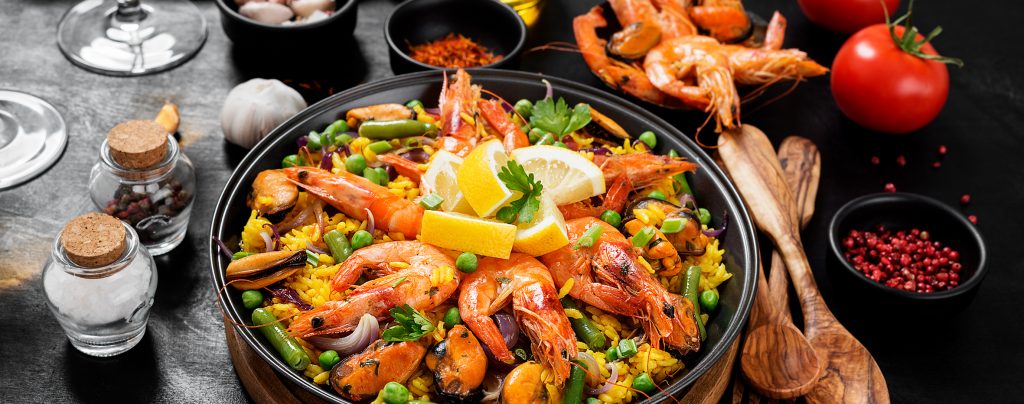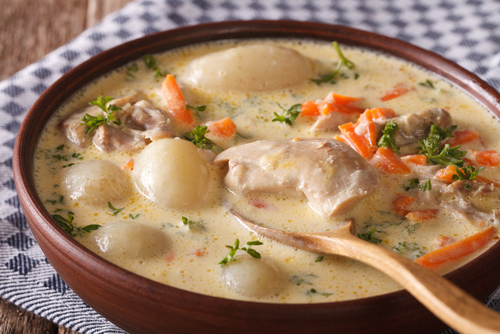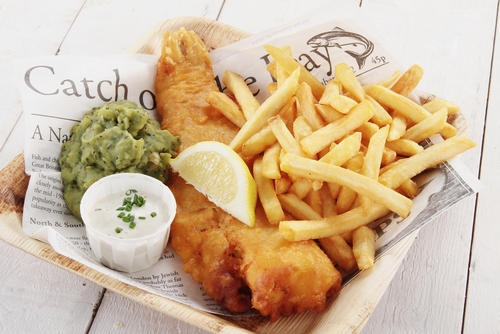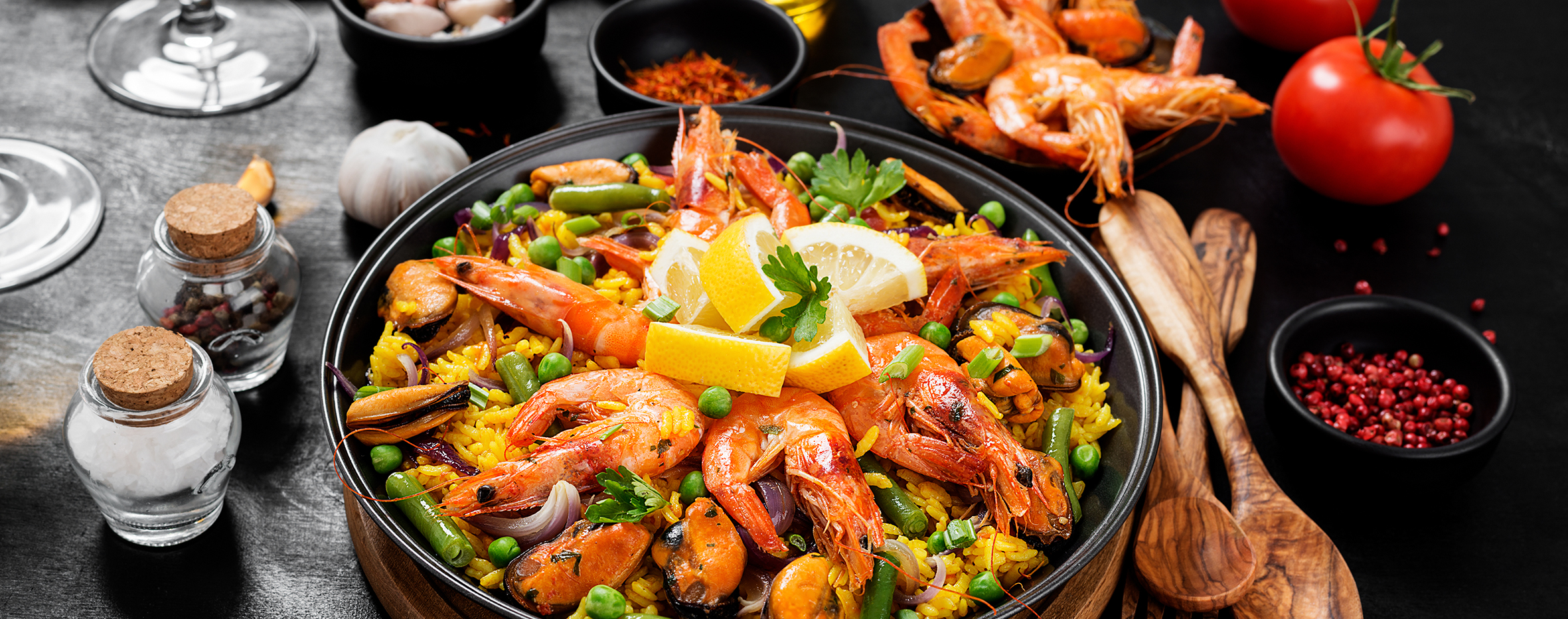Not only is the Eurovision Song Contest one of the longest running television shows of all time (broadcasting since 1956), but on average it is viewed by a staggering 180 million people every year (Statista).
Whether you get tickets to experience the contest live or host a watching party at home, it has become a worldwide phenomenon that celebrates talent, creativity, and incredible costumes from all across the continent.
If you’re already excited for what Eurovision 2023 has instore this May, luxury recipe box experts The Cookaway have shared five of their favourite European recipes you can try to give yourself a taste of the competition.
Greece – Dolmades
Whether you serve them as a starter or as a main with a side of Greek salad, dolmades are a national favourite in the Mediterranean. They consist of vine or grape leaves stuffed with rice, herbs, and sometimes ground beef or pork, and are always served with a generous squeeze of lemon.
Ingredients (makes 60):
· 60 vine leaves, drained and rinsed
· 250g of rice
· 250 ml olive oil
· 2 onions, finely chopped
· 500ml of warm water
· The juice of 2 lemons
· 2 tablespoons of dill
· 120g of parsley, chopped
Method:
Remove your vine leaves from the jar, take off their stems, rinse them, and leave them to drain in a colander. You should then also wash your rice to remove excess starch by rinsing it with cold water in a sieve or colander. In a large saucepan, add a third of the olive oil and the chopped onions and cook them until translucent, but not coloured. Add the rice to the pan and heat for around a minute before pouring in the warm water and half the lemon juice. Simmer until the water has been absorbed and the rice is part cooked, then remove from the heat and stir in the dill, parsley, salt, and pepper.
To make the dolmades, place one vine leaf (shiny side down) on a flat surface and add a teaspoon of cooled rice at the bottom end. Be careful not to overfill them, as the rice will expand during cooking. Fold the lower section of the leaf over the filling, bring the two sides in towards the centre, and roll up tightly. Place this on the bottom of a pot lined with a few extra vine leaves and pile them up in layers. Drizzle with the rest of the olive oil and lemon juice and place an inverted plate on top to hold them down. Add just enough water to cover them and simmer with a lid on for 30–40 minutes, until the water is absorbed and only the dolmades and oil remain. Let them fully cool before eating.
Due to the aromatic flavour from the herbs and the vine leaves themselves, dolmades pair particularly well with a fresh, dry white wine. This makes them a great appetiser for your Eurovision viewing party!
Spain – Paella

This iconic dish might look complex but is actually easier than you might think. It uses saffron for vibrancy so it’s bursting with golden flavours, and pairs particularly well with a full-bodied Spanish rioja.
Ingredients (Serves 6):
· 60ml of extra virgin olive oil
· 1 onion
· 1 bell pepper
· 4 cloves of garlic
· 3 plum tomatoes, finely diced
· 1 bay leaf
· 1 teaspoon of paprika
· 1 pinch of saffron
· 60ml of white wine
· 4 boneless, skinless chicken thighs (optional)
· A handful of fresh chopped parsley
· 200g of Spanish rice
· 1 litre of chicken stock
· 100g of frozen peas
· 200g of king prawns
· 200g of mussels, cleaned & debearded
· 200g of calamari rings
· Lemons, to garnish
Method:
Start heating the olive oil in a skillet over medium heat. Add the onion, peppers, and garlic and cook until the onion is translucent. Add chopped tomato, bay leaf, paprika, saffron, and salt and pepper to taste. After five minutes, add the white wine and cook for another ten minutes. Add the chopped chicken if using, as well as the rice and two tablespoons of chopped parsley, heating for a minute. Pour the broth into the pan and level rice into an even layer. Don’t stir the mixture going forward!
After this comes to a boil, reduce the heat to a simmer, giving the pan a shake back and forth once or twice during cooking. Cook for about 15–18 minutes uncovered, then nestle the shrimp, mussels, and calamari into the rice, sprinkle peas on top, and continue to cook (without stirring) for five more minutes. Once most of the liquid is absorbed and the rice at the top is nearly tender, remove from the heat and cover with a lid. Place a kitchen towel over the lid and allow the pan to rest for ten minutes. Garnish with fresh parsley and lemon slices.
Italy – Ragù alla Bolognese
For the people of Bologna, proper ragù is taken very seriously! The recipe below will help you create an authentic dish the Italians would be proud of.
Ingredients:
· 300g of lean ground beef
· 150g of ground pork belly
· 50g of white onion
· 50g of carrot
· 50g of celery
· 30g of double concentrated tomato paste
· Half a glass of red wine
· 50g of unsalted butter
· Half a glass of whole milk
· Salt & black pepper to taste
Method:
In a large pot, cook the pork belly over medium heat until all the liquid has evaporated. Then, add the ground beef and cook until golden brown, setting aside in a covered bowl. In the same pot, melt the butter over low heat and fry the finely minced onions, carrots, and celery until very tender and translucent. You can then add the tomato paste and fry for another five minutes.
When the vegetables are well cooked, add the seared meat back in the pot and raise the flame high. Add the wine, stirring frequently for a couple of minutes. Then turn the heat down to a very low simmer and cover the pot with a lid. Slow cook for at least three hours, stirring occasionally and adding beef stock if you need a more moisture. When the ragù alla Bolognese is well done, stir in the whole milk (warmed) and cook for another 40 minutes on low heat. You can then serve your ragù over tagliatelle cooked al dente, adding salt and pepper just before serving.
Belgium – Waterzooi

While it might be known to tourists for its chocolate, beer, and waffles, Belgium also has a trove of traditional savoury dishes you won’t want to miss. Waterzooi is a Flemish fish stew that showcases the North Sea’s incomparable fresh mussels, and it is best served with a chunk of crusty bread to soak up the flavoursome broth. Tuck in!
Ingredients:
· 300g of peeled potatoes
· 2 tablespoons of butter
· 1 stalk of finely sliced celery
· 1 carrot, 1 onion, and 1 leek, finely sliced
· 200ml of fish stock
· 150g of skinless plaice fillet, cut into pieces
· 150g of skinless haddock, cut into pieces
· 100g of mussels, cleaned and debearded
· 1 large egg yolk
· 100ml of cream
· 100g of peeled shrimp
· 1 tablespoon of finely chopped chives
Method:
Boil the potatoes in salted water until cooked. While these boil, heat the butter in a frying pan and add the celery, carrot, leeks, and onion, cooking them until translucent. Pour the stock into the pan and allow this to infuse before gently poaching the chopped fish in the broth for three to five minutes. Add the mussels to cook for a minute, and once they’ve opened, remove all the seafood from the pan and set it aside.
Strain the stock into a saucepan and set the cooked vegetables aside with the potatoes and seafood to use later. Whisk an egg yolk with the cream in a bowl before putting the stock back on the heat. Once the stock reaches boiling point, add the cream and egg mixture as this will thicken it and create a sauce. Reduce this to a simmer, add the peeled shrimp and half the chives, and stir. Add salt and black pepper to taste.
Place the fish pieces, vegetables, and potatoes in a serving bowl and cover them with the broth. Garnish with the remaining chives.
Britain – Fish and Chips

If all that culinary travel has got you feeling homesick, return to a comforting British classic. While it might be a familiar favourite, you can elevate this dish with high-quality, locally sourced fish to make sure you’re getting the best British produce. Enjoy this classic at your annual Eurovision viewing party and show your support for the UK from the comfort of your living room.
Ingredients:
· 120g of self-raising flour (plus additional to coat)
· 175g of white fish (such as cod or plaice)
· 1 medium egg white
· 160ml of light beer or lager
· 1 large waxy potato, peeled
· Sunflower oil
· 1 teaspoon of curry powder
· 1 teaspoon of baking powder
· Salt & black pepper to taste
Method:
Get the oil on a medium-high heat in a large pan while you assemble your ingredients. In a bowl, whisk together the flour, baking soda, curry powder, and beer. Then, whisk the egg white until there are stiff peaks and fold this into your batter. If the batter feels too heavy, add a splash of water. Season the fish with a pinch of flaky salt, then coat with more flour. Knock off the excess flour and place the fish into batter mixture, making sure it’s fully battered before dropping into the oil.
Once the fish is frying, baste it with teaspoons of the oil until both sides are golden brown. The fish should be in the oil for three to four minutes. Once cooked, put this on a plate with a paper towel and put into a warm oven while you make your chips. Chop the potato into tall skinny fries, add new oil to the pan, and fry the potatoes on a high heat. Once the fries are browned, place them onto a paper towel, add salt, and take your fish out of the oven. Serve with mushy peas, curry sauce, ketchup, or tartar sauce, depending on your guests’ preference!
– Nidhi Verma, Head of Food & Founder of The Cookaway comments:
“The Eurovision Song Contest is a celebration of all the talent Europe has to offer, and what better way to celebrate our continental neighbours than sampling their cuisine? We could all benefit from broadening our culinary and cultural horizons, so try these delicious recipes to give yourself a taste of the competition this year.
“Traditional dishes are an excellent way to familiarise yourself with the flavours, local produce, and even the atmosphere of a country. So, experiment with these dishes up in the weeks leading up to the competition or enjoy them while you watch the Eurovision final on the 13th of May.”





